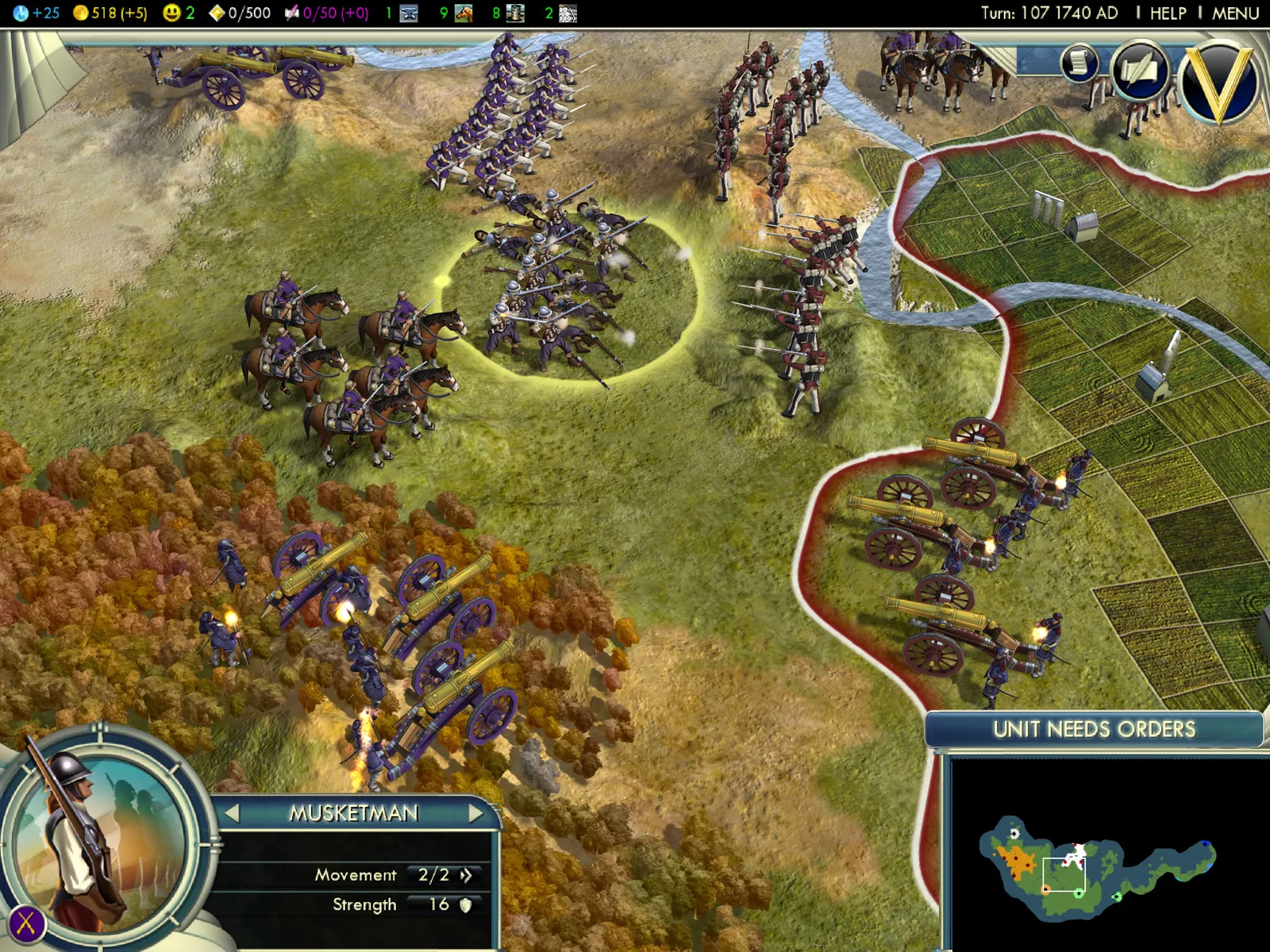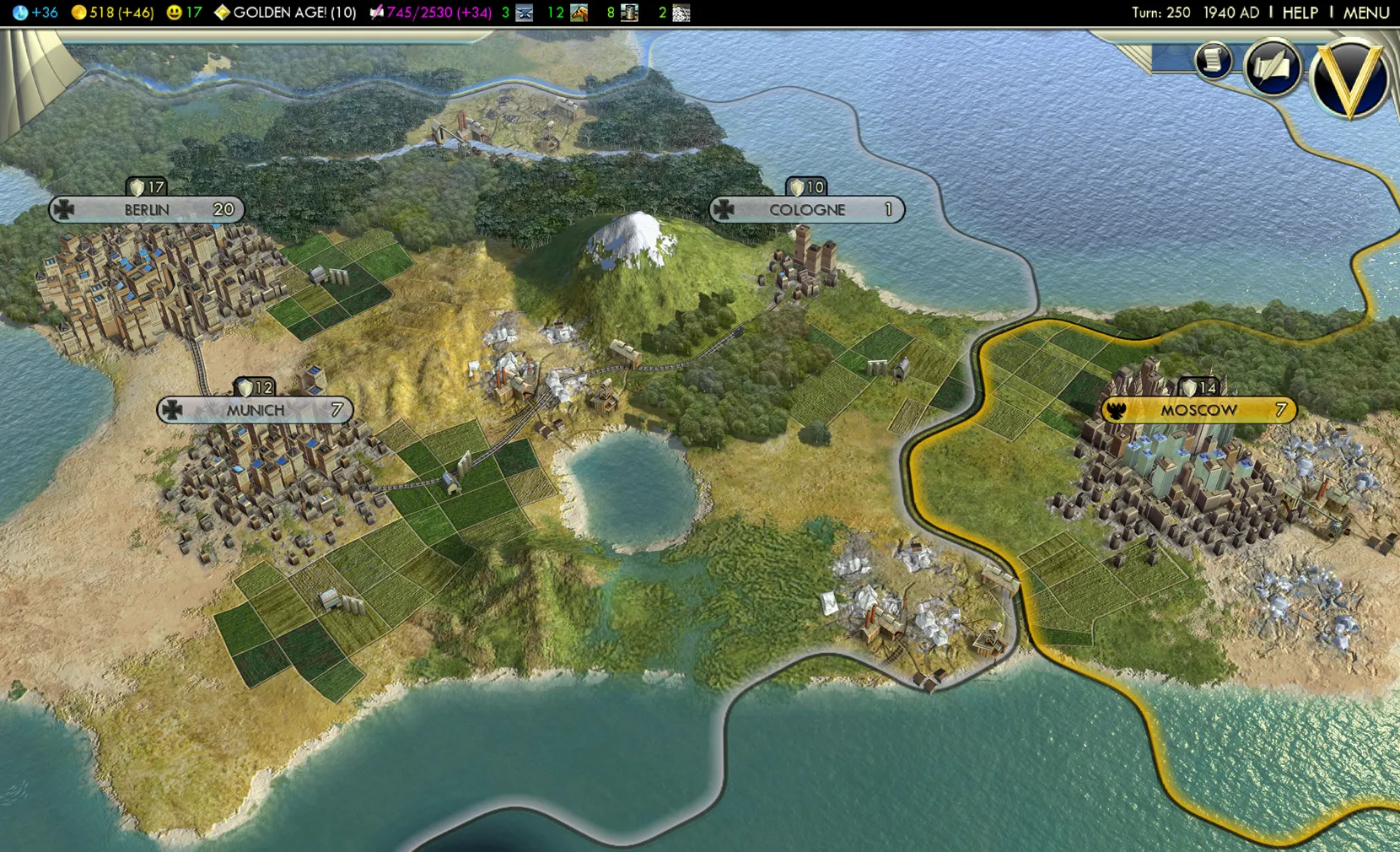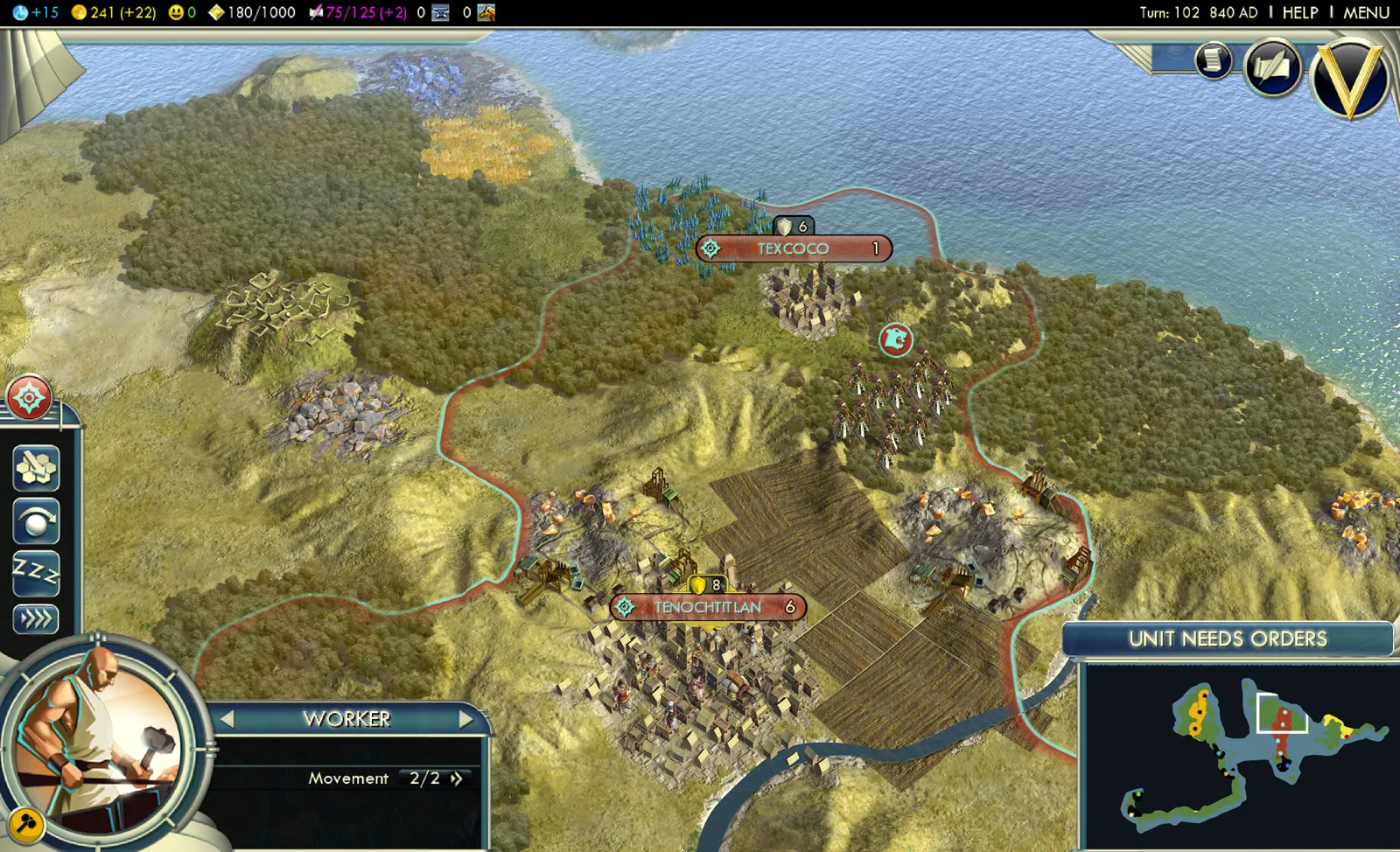Civilization V

Civilization V isn’t your typical strategy sequel. New lead designer Jon Shafer and the team at Firaxis have stripped the game down to its bare bones and rebuilt it with a new vision. It’s not Civ IV, but it’s not trying to be.
The first thing I noticed upon loading the game is the unrepentant Art Deco-ness of the interface. It’s a weird look for Civ, which has never followed any particular aesthetic in the past. After spending a few dozen hours with it, though, I began to appreciate the clean lines and saturated colors. I have a few quibbles with the deeper levels of the interface, which I’ll get to in a moment, but the basic look is inviting and easy to navigate.
The gameplay itself feels more like the streamlined console spinoff Civilization Revolution than the meticulous intricacies of Civilization IV. I’m not convinced that this is a bad thing, though. This is the most newbie-friendly main-line Civ by a huge margin, and the revamped turn-by-turn nuts and bolts of gameplay require much less attention to detail than in Civ IV. It wasn’t uncommon in that game for advanced players to math out their builds dozens of turns in advance, particularly in the critical early game. That may well happen at the higher end of Civ V play, but the mechanics are much less supportive of those kinds of hyper-optimized build orders.
The overriding sense I have from diving into Civ V is that the designers want players to have fewer, more meaningful decisions. Buildings cost more to erect, but often give more dramatic bonuses. The removal of unit stacking, along with the general balancing of military this time around, means that you have fewer, more important units to manage and that positioning is far more meaningful.
For all the gnashing of teeth over the new combat model, where units can’t stack and ranged units can fire from multiple spaces away, I’ve found so far that almost all it does is make combat throughout the ages closer to ancient era warfare. Ancient wars in Civ have never been fought by the giant stacks of doom that take over every other era of warfare, simply because ancient civilizations can’t afford to build them -- kingdoms were won or lost based on half dozen units on either side of the conflict. The upshot of Civ V combat as far as I’ve seen is that this dynamic extends throughout history. Armies get bigger in later epochs, but not nearly to the extent that occurs in Civ IV, where it isn’t uncommon to have 10-plus units in a single stack by the medieval era.
I’ve noticed a much smaller spread of combat results so far in Civ V as well. In my experience, the predicted outcome tends to vary by only 20 percent or so either way, causing much greater predictability in war. This is critical because without the numbers of units involved to even out odd combat results, the old Civ combat calculations would result in vastly inferior forces winning out far too often.
Much of the micromanagement involved with cities has been stripped out, as happiness is now abstracted to an empire-wide level now instead of being modeled per city. City border growth is per-tile now, rather than radially around the city itself, meaning that the careful planning of optimal city locations that was the hallmark of the early game in previous Civs is gone. You still have to pick good sites for your cities, but those decisions hinge more on proximity to water and resources. Settling a city one space away from perfectly optimal is no longer a big deal.
Speaking of cities, my experience so far is that you tend to create fewer of them on normal-sized maps. I was hitting the BC/AD calendar flip with around four cities, which is slightly more than half of what I generally shoot for in Civ IV. The happiness cap on non-trivial difficulties is brutal, and requires careful management of expansion. While I often felt like I was being unnecessarily held back relative to Civ IV, I did like that wilderness areas persist beyond the classical age now.
I love that gold has real meaning now. In previous Civilizations, your treasury was never half as meaningful as your research rate and industrial capacity. Being divorced from the general commerce modeling of previous Civs means that you have real choices to make between gold, research, production, and food. The myriad of critical uses for money mean that you have to care about your treasury’s balance this time around. It takes a non-trivial amount of money to keep any kind of useful standing army. Cash is the primary means of interacting with neutral city-states as well. Finally, and most importantly, dropping a big chunk of gold (starting at 200 in the classical era) allows you to enter into a Research Agreement with a rival. Should you manage to not go to war with them in the next 30 turns, the agreement ends by popping free tech for both of you -- giving diplomacy that much more weight.
The above city-states are, however, my biggest disappointment so far with Civ V. Because buying a chunk of influence with them costs the same as entering a research agreement (free tech! Seriously, it’s so good) with a rival, it’s rarely a good use of your money. It’s slightly more interesting to complete missions for them -- I’ve seen them ask for the elimination of a rival city-state, a specific resource, a road to your capital, and contact with another civilization -- to accrue influence, but those goals too often have far too high of opportunity costs. Why would I send my entire military to conquer a city-state halfway across the world when I need it to stay home and deter would-be invaders, or send them against a nearby rival? It’s a neat idea, but as it stands I rarely spend the resources on befriending city-states as those resources can usually be put to better use elsewhere.
The other thing that bothers me about Civ V is the poorly laid out advisor reports and the woefully inadequate (by Civilization standards) in-game help. It drives me bonkers that I can’t easily see how many of which resource I have access to, what my rivals’ relationships to each other are, what their attitudes toward me are, the extant city-state missions currently available, or a number of other pieces of information that are critical at non-trivial difficulties.
These are absolutely things that can be fixed before release, and I hope that they are because I like the basic game design a lot. It’s simpler than Civ IV in many ways, but with much more depth and nuance than Civ Rev (not to mention a functional diplomacy model). I urge longtime Civ players to keep their minds open about the many radical shifts between this Civ and the last, because I’m pretty sure there’s an excellent game in here somewhere.




Get the Game Informer Print Edition!
Explore your favorite games in premium print format, delivered to your door.
- 10 issues per year
- Only $4.80 per issue
- Full digital magazine archive access
- Since 1991










